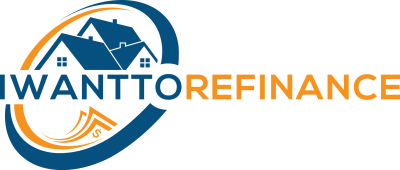Guide to Purchasing a Home
Key Points:
-
Before searching for a home, it's important to determine your affordability.
-
The home-buying process includes finding a property, securing financing, closing the deal, and recording the transaction.
-
First-time buyer programs can assist with down payments and closing costs.
Table of Contents:
1. Determining Affordability
2. Shopping for a Mortgage
3. Mortgage Prequalification and Preapproval
4. Types of Home Purchase Mortgages
5. Government Loans: FHA, VA, and USDA
6. Finding the Right Property
7. Making an Offer
8. Escrow Process
9. Closing the Deal
For first-time buyers, purchasing a home can seem overwhelming. The process involves personal finance considerations, evaluation by mortgage lenders and sellers, and potential stress. However, this article breaks down the steps into manageable tasks, allowing you to buy a house with less anxiety.
Determining Affordability:
The first step in buying a home is to establish your price range. There are different methods to calculate this:
- Base your home price on your current housing expenses.
- Seek prequalification from a mortgage lender, who can provide a price range based on your income and expenses.
- Multiply your annual income by three, four, or five times, considering your debt load.
The most suitable method depends on your financial situation, future goals, and expected income. If you're concerned about being financially strained, it may be wise to base your home purchase price on your current housing costs. Assess your budget to determine if you can comfortably afford higher monthly housing expenses. Use a mortgage calculator to find a home price that aligns with your budget, considering property taxes, homeowners insurance, and maintenance costs.
When shopping for a mortgage, it's crucial to compare quotes from multiple providers. Research indicates that obtaining four or more quotes can save thousands of dollars in closing costs. Obtaining mortgage quotes online is convenient, and neglecting to do so may result in missed savings. When contacting mortgage lenders, provide consistent information such as your credit score range, down payment amount, desired loan amount, and expected duration of homeownership. Lenders should provide a Loan Estimate disclosure, allowing you to compare closing costs and interest rates. Choose the loan with the lowest cost.
Mortgage Prequalification and Preapproval:
Smart homebuyers seek mortgage preapproval before starting their search. Prequalification involves providing the lender with income and expense information to receive an estimate of how much you can afford. It doesn't involve a credit check and doesn't guarantee loan approval. On the other hand, preapproval is more comprehensive. It requires completing an application, submitting proof of income, and bank statements, and undergoing a credit check. Preapproval provides a letter stating the approved financing amount, as long as your financial situation remains unchanged and the property meets the lender's guidelines. A preapproved offer carries weight and enhances your negotiating position.
Types of Home Purchase Mortgages:
The right mortgage program depends on factors such as your down payment amount, intended duration of homeownership, and qualifications (credit score, income). Conforming mortgages are offered by Fannie Mae and Freddie Mac lenders and adhere to the guidelines set by these corporations. They require a 20% down payment or mortgage insurance for lower down payments. Government loans, including FHA, VA, and USDA programs, help buyers with down payment challenges. These loans have specific eligibility criteria and offer more flexible options for borrowers.
Finding the Right Property:
Once you have secured financing, it's time to search for a home. Create a list of your needs, wants, and deal-breakers. Evaluate properties on your own or with a real estate agent, taking note of how well they meet your criteria. Your agent should show you properties that fit your budget and have the features you prioritize.
Making an Offer:
When making an offer, be aware of the components involved: price, timing, inclusions, financing, and contingencies. Determine your maximum price and provide a mortgage preapproval or prequalification letter with the offer. Include a timeline for inspections, appraisals, loan approval, and closing, considering the seller's preferences. Negotiate the inclusion of items like appliances and personal property, but be aware that personal property is financed separately. In competitive markets, submitting a clean offer without excessive contingencies can increase your chances of success.
Escrow Process:
During the escrow process, an escrow company or lawyer handles the legal requirements and financial transactions of the home purchase. This includes managing earnest money deposits, closing costs, down payments, mortgage funds, and payments to third parties. Escrow officers ensure the proper recording of the transaction with the county and establish your ownership rights.
Closing the Deal:
The closing stage is the final step in buying a home. Review and sign the mortgage documents, ensuring their accuracy and alignment with your expectations. Do not hesitate to seek clarification or ask questions before signing. You will receive copies of all disclosures and a settlement statement that lists all transaction costs. Keep these documents, including the home appraisal, for future reference, as they will be valuable if you decide to refinance or sell your home.


